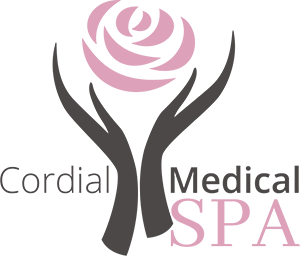How are Botox and Fillers Different?
Botox and dermal fillers are two types of cosmetic treatments that are both used for treating wrinkles and fine lines. Although they treat similar conditions, both types of treatments differ significantly from each other. People are often confused as which treatment to use for a specific condition.
In this article, we will discuss both the procedures in detail and will explain how Botox and fillers differ from each other.
What is Botox?
Botox or Botulinum toxin is a neurotoxic substance produced by Clostridium botulinum bacteria, which causes paralysis in muscles by blocking the signals between brain and muscles, which cause these muscles to contract.
Wrinkles are often caused by muscle contractions as we age, and by preventing the contraction of facial muscles, Botox can be used to treat wrinkles.
Botox is one of the most popular non-surgical skin treatments in the world as annually, more than 6 million Botox injections are administered across the globe. Indeed, it’s the most widely used treatment for treating wrinkles and fine lines.
What conditions can be improved using Botox?
Botox can be used to treat the following conditions:
Wrinkles
Fine Lined
Excessive sweating
Muscular Disorders
Migraines
There are numerous medical applications of Botox, although it’s primarily used for reducing facial wrinkles and fine lines.
Side Effects of Botox
Botox doesn’t have any severe side effects if administered properly. Less than 1 percent of people receiving injections of Botulinum Toxin type A develop antibodies against the toxin, which makes subsequent treatments ineffective.
In addition to this a person who has been administered Botox may feel the following side effects:
Mild Nausea
Headaches
Flu
Numbness
Temporary paralysis of nearby muscles
Dry mouth
Rashes
Swelling
What are Dermal Fillers?
Dermal fillers are chemical substances designed to be injected beneath the surface of the skin to add volume and fullness. They are often used for skin issues, and some people mistake them for Botox injections, but both these significantly differ from each other.
Dermal fillers primarily contain the following substances:
Hyaluronic acid which is also commonly found in some bodily fluids naturally and adds plumpness to the skin
Polylactic acid that stimulates collagen production in our body
Calcium hydroxylapatite a mineral that is also found in our bones
What conditions can be treated using dermal fillers?
Dermal fillers are used to treat a variety of conditions associated with the aging process including:
Fill in shallow areas on the face
Remove the shadow or wrinkle under the eyes caused by the lower eyelid
Fill in static wrinkles, especially on the lower face
Fill in recessed scars
Plump up thinning lines
Side Effects of Dermal Fillers
Dermal fillers are safe, and only in some rare cases, we hear about side effects. Some of the most common side effects include:
Redness, bruising, and swelling
Skin damage causing a wound, infection, or scarring
Blindness or blurred vision
Skin rash, itching, and pimples
Main Differences between Botox and Dermal Fillers
Botox is primarily used to reduce wrinkles, fine lines, and creases caused by contraction of facial muscles. It is used mainly on the upper portion of the face, around the forehead, and eyes.
On the other hand, dermal fillers are used to fill up shallow areas and for providing plumpness to areas that have lost volume on the face. They are mostly used to treat wrinkles around the mouth, thin lips, cheeks, forehead wrinkles, scars, etc.
Conclusion
Botox and fillers differ from each other and are used for different conditions. Botox is effective for 3-4 months, while the effect of fillers depends on the type of substance used. Cordial Medical Spa provides top-notch Botox and filler treatment for treating a variety of skin conditions. Schedule an appointment by calling 847-970-9933 or fill in this contact form.
